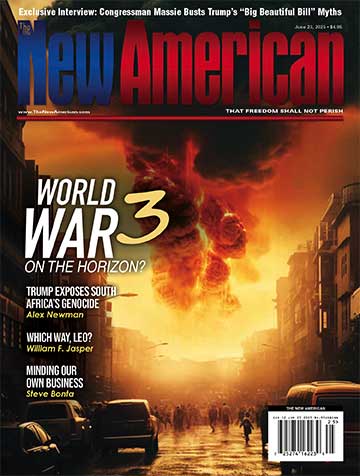
Mass killings lead the headlines much more than they used to. Schools, theaters, churches, and other places where people gather peacefully have become killing fields more and more frequently over the past few years. The gun control crowd — never to miss an opportunity — claims that guns are the problem. More guns means more mass killings. Less guns would mean fewer killings. It’s simple, they say. There are a couple of problems with that “simple” theory, though. For one thing, some of these recent attacks have not involved guns. In those cases, the tools of death were knives, cars, bats, or whatever else was handy. For another thing, guns have been used to stop some attacks, though mainstream media rarely report that. So, if the aggressive use of guns is not the common denominator, what is? More and more evidence is pointing to use of drugs, particularly the kind psychiatrists and medical doctors prescribe for depression and anxiety.
In fact, just two weeks before Chris Harper-Mercer killed 10 people and injured seven more in a shooting rampage at Umpqua Community College in southwestern Oregon, the Los Angeles Times reported on a study from Sweden showing that the use of antidepressants greatly increases the likelihood that certain people will act violently toward themselves or others. The report said:
Young adults between the ages of 15 and 24 who had filled prescriptions for the drugs were more likely to be convicted of a homicide, assault, robbery, arson, kidnapping, sexual offense or other violent crime when they were taking the medications than when they weren’t.
The study focused primarily on the effects of Selective Serotonin Re-uptake Inhibitors (SSRIs), which are a widely prescribed class of drugs used to treat depression and anxiety. Examples of SSRI’s include Prozac, Paxil, and Seroxat. The study was led by Seena Fazel of Britain’s Oxford University and examined data from Sweden’s prescribed drug register and its national crime register. The researchers found that 850,000 people had been prescribed SSRI’s over the three-year period for which they examined data and that one percent of them were convicted of a violent crime.
Reuters also reported on the Swedish study and noted:
While in most age groups the likelihood of criminal violence was not significantly different when people were taking SSRIs and when they were not, in 15-24 year-olds there was a distinct increase — of 43 percent — in their risk of committing violent crime while on the medication.
The study took into account those who had been prescribed the drugs, but were no longer using them and found that those people were not more likely to commit violent crimes than the population at large. So, all other factors being equal, young people who take certain psychiatric drugs are much more likely to commit violent acts than those who are not using those drugs.
While mainstream media is just now reporting on this, The New American pointed out this connection years ago. In 2013, after Adam Lanza killed 20 children and six adults before killing himself, Rebecca Terrell wrote:
There is a striking connection between school shootings and psychotherapeutic drugs, also known as psychotropics. Consider these examples:
• Toby Sincino, a 15-year-old who shot two teachers and himself in 1995 at his South Carolina school, was taking the antidepressant Zoloft.
• Kip Kinkel, an Oregon teen who murdered his parents and proceeded on a shooting rampage at his high school in 1998, killed two and wounded 25 while in Prozac withdrawal.
• Shawn Cooper fired two shotgun rounds in 1999 at his Idaho high school while on an antidepressant.
• T.J. Solomon, Jr. was 15 years old when he shot six classmates in Atlanta in 1999. He was taking Ritalin and was also being treated for depression.
• Eric Harris was one of the assailants at Columbine High School in Colorado in 1999. His autopsy revealed a therapeutic level of the antidepressant Luvox in his system.
• Jason Hoffman wounded five people with a shotgun at his California high school in 2001 while on two antidepressant medications, Celexa and Effexor.
• Jeffrey Weise, a student at Red Lake High School in Minnesota, killed 10 and wounded seven in 2005 while on Prozac.
• Matti Saari, a college student in Finland, shot and killed 10 people before committing suicide at his university in 2008. The Finnish Ministry of Justice later reported he was taking an antidepressant and an anti-anxiety medication.
• Steve Kazmierczak killed six including himself at Northern Illinois University in 2008 while in withdrawal from the antidepressant Prozac.
• Tim Kretschmer murdered 15 students and teachers at his secondary school in Germany in 2009, and then committed suicide. Police reported Kretschmer was taking prescriptions to treat depression.
It is now known that Chris Harper-Mercer had been taking several prescription drugs, including antidepressants and other psychiatric drugs, before his killing spree. His user name on several social media sites was “Lithium Love” — a reference to a psychiatric drug used to treat bi-polar disorder. Lithium is also often used in conjunction with SSRI’s. Harper-Mercer had posted on Facebook about the large number of medications he was taking. At one point his mother had him admitted to a mental hospital because he quit taking his medications. While his medical records have not been released, and it is not known whether Harper-Mercer was taking SSRI’s, it would certainly fit the pattern that has emerged in the wake of the mass killings over the past decades.
Of course anecdotes are not proof, and most people who regularly take antidepressants do so without becoming violent. The fact remains, though that young people are particularly at risk of developing violent tendencies, suicidal tendencies, or both while taking these drugs. The gun control crowd makes a point of the fact that there are an estimated 300 million guns in the United States and claims that the increase in guns is responsible for the increase in mass killings. This, of course, ignores the fact that most — in fact the vast majority — of those guns are never used in a crime. It also ignores the fact that the vast majority of mass killings take place in “Gun-Free” areas such as schools, malls, theaters, and churches, where law-abiding, peace-loving, citizens are compelled to disarm, preventing many of them from stopping more of these killings. To continue this mantra, the gun control crowd will now also have to ignore the data on the effects of psychiatric drugs related to violent crime.
Hopefully, the Swedish study will spark more such studies, and the serious danger posed by the wholesale use of dangerous psychiatric drugs will be more widely known and appreciated.





